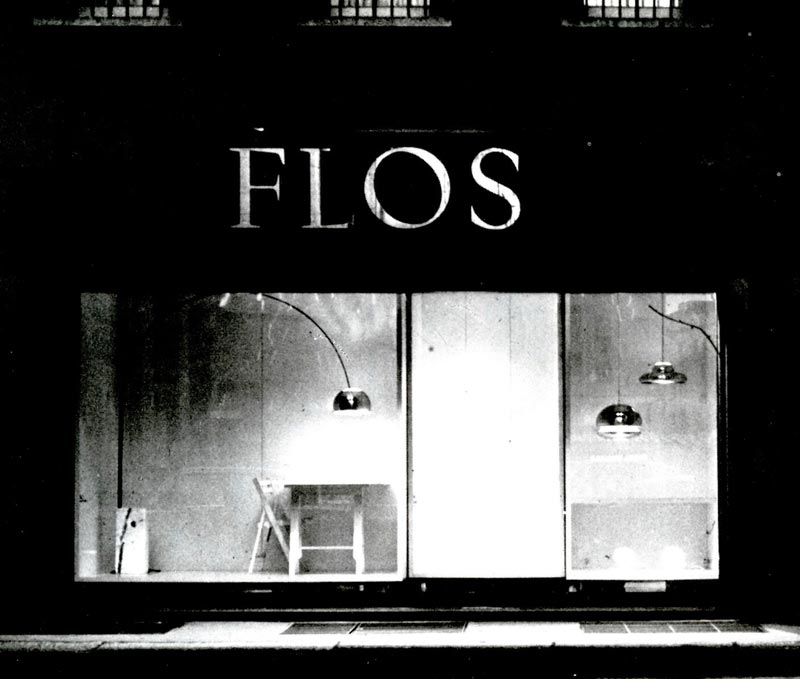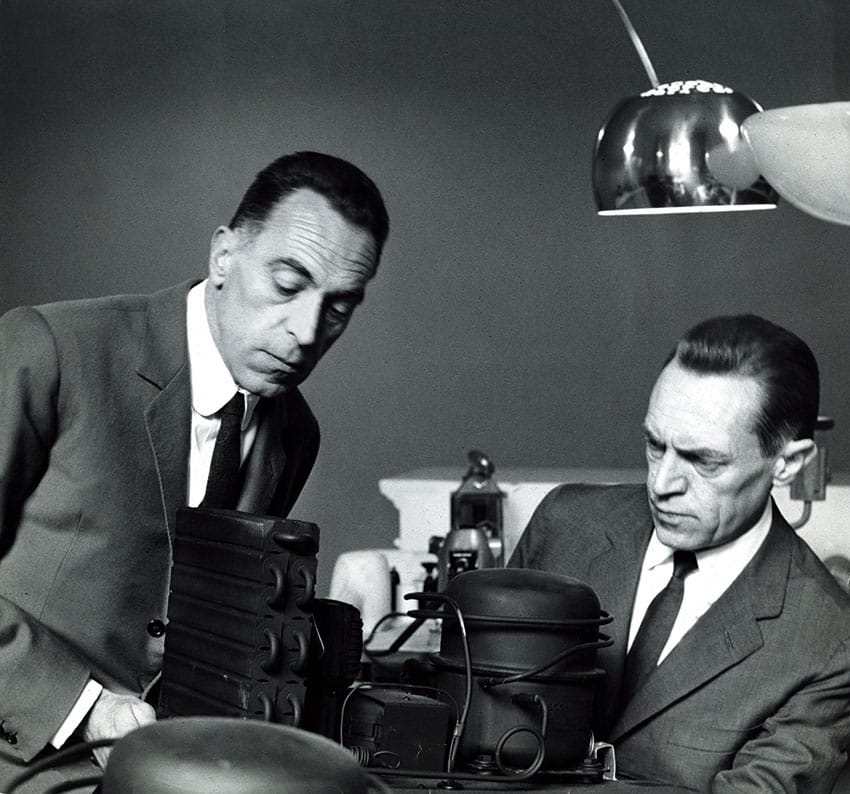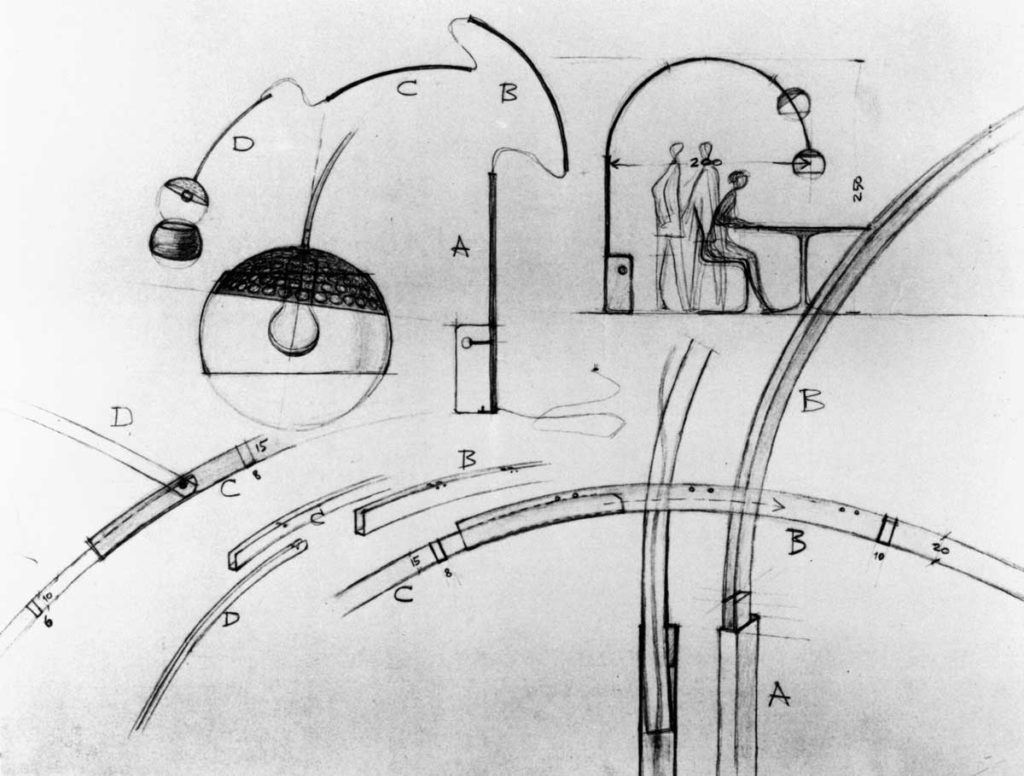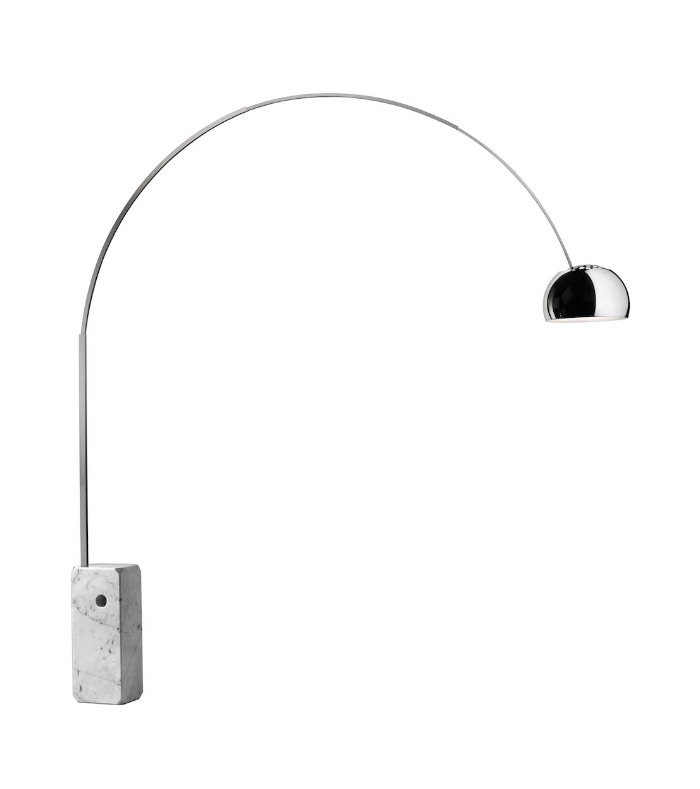This Modern icon has its roots in north eastern Italy, but has made its way into design schemes around the world. Here’s how it all began.

Within the lexicon of Modern and Mid-Century Modern lighting designs, the Arco floor lamp is an unmistakable icon—its understated silhouette heightens the drama and panache that the fixture brings to a space. Simple in appearance, yet unforgettable. The story of the Arco floor lamp starts with the Castiglioni brothers, who at the time the lamp was designed, were working under the umbrella of Italian lighting design firm Flos.
Flos was founded in 1960 in Merano, Italy, setting out to create new and innovative artificial lighting designs under the creative direction of designer Dino Gavina. The company started with only a few key members, each design pioneers in their own right—Afra and Tobi Scarpa and brothers Achille and Pier Giacomo Castiglioni. The small team set to work designing and fabricating fresh lighting designs that sought to disrupt the lighting market.

In 1962, Flos was coming under new management—now overseen by Sergio Gandini, the company’s headquarters were moved to the industrial city of Brescia, a city east of Milan. It was there that the Castiglioni brothers found themselves surrounded by an environment that fostered the energy that pushed the boundaries of experimental art, industrialism, and functional design—the combination of which spawned the Arco floor lamp.
Together with his brother Pier Giacomo, Achille Castiglioni had been designing artful lighting fixtures since the 1940s, having embarked as an architect before switching to product design, having experienced a minimal demand for new construction projects during the height of the war.

The lamp itself takes a relatively simple geometric concept, the circle, and transforms it into a supremely dynamic lighting fixture. While the eye might first catch the high octane shade of the lamp, the Arco’s base is just as important to the design—its Carrra marble base not only functions as a counterbalance for the lamp, but its symbolic significance also conflates design old and new. The material itself was used in construction dating back to Ancient Rome (the Pantheon is famously made of the stuff), and is quarried in the northern reaches of Tuscany, making it a material closely associated with Italian design history. As a part of the Arco lamp’s ultra-modern design scheme, the material nods to centuries of tradition while its minimalist form boldly breaks the mold. Then, bursting from the base is the arm of the lamp, with a spherical shade finished in chrome. It introduces a shine, a flash to whatever space it finds itself a part of, suspending a glossy disco ball-like roundel in space, floating and glowing at once.

The lamp’s design took off with its debut in 1962, immediately nabbing the attention of architects and designers alike. It was a sensation then and in the decades to follow, as the lamp was inducted into the permanent collections of the Triennale Museum in Milan and the Museum of Modern Art in New York City—both distinctions awarded to superlatively influential designs. Many have tried to imitate it with cheap reproductions, but the true design has continued to be sold by Flos since its release, a treasure of the mid-century design catalogue that has more than held up against the passage of time.